In agriculture, the application rate of fertilizers per acre is crucial for crop health and yield. This rate varies widely depending on the type of crop, soil conditions, and farming practices. By examining different crop fertilizer application rates, we can gain insights into optimal agricultural practices and their impact on productivity.
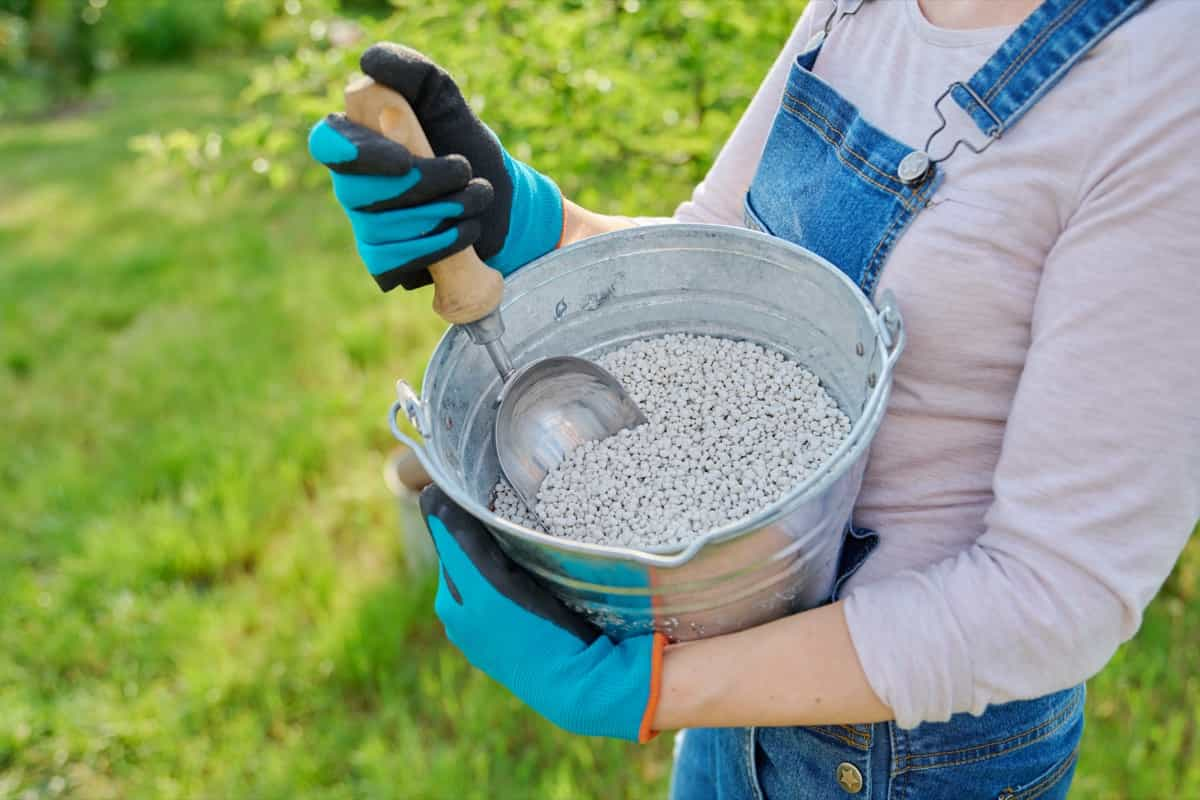
Understanding these variations is key to achieving sustainable farming and balancing crop nutrition needs with environmental considerations. Our exploration into this topic sheds light on how farmers can maximize yields while preserving soil health and reducing environmental impacts, offering a comprehensive view of modern agricultural practices.
Fertilizer Application Rate Per Acre
Fertilizer application rates per acre are the amount of fertilizer that is applied to a unit area of land to provide the necessary nutrients for crop growth. Fertilizer application rates depend on several factors, such as the type of crop, the soil fertility, the nutrient content of the fertilizer, and the environmental conditions. Fertilizer application rates are usually expressed in kilograms or pounds of nutrients per hectare or acre.
Factors Influencing Fertilizer Application Rates
Crop type: Different crops have different nutrient need and uptake patterns. For example, cereals need more nitrogen than legumes, and fruit crops need more potassium than leafy vegetables. The crop type also determines the timing and method of fertilizer application.
Soil fertility: The soil fertility is the ability of the soil to supply nutrients to plants. Soil fertility depends on the soil texture, structure, organic matter, pH, salinity, and nutrient status. Soil testing is a useful tool to assess soil fertility and determine the fertilizer needs of the crops.
Nutrient content of the fertilizer: The nutrient content of the fertilizer is the percentage of nitrogen (N), phosphorus (P2O5), potassium (K2O), and other micronutrients in the fertilizer. The nutrient content determines how much fertilizer is needed to supply a certain amount of nutrients to the crops. For example, urea has 46% N, while ammonium nitrate has 34% N. Therefore, more ammonium nitrate is needed to provide the same amount of N as urea.
Environmental conditions: The environmental conditions affect the availability and loss of nutrients in the soil. Factors such as temperature, rainfall, irrigation, drainage, erosion, leaching, volatilization, denitrification, and fixation influence nutrient cycling and retention in the soil. For example, high temperatures and rainfall increase the loss of nitrogen through volatilization and leaching, while low pH and anaerobic conditions increase the fixation of phosphorus.
Calculating Optimal Fertilizer Application Rates (FAR) Per Acre
- The recommended nutrient rate (RNR) for the crop: This is the amount of nutrients that are required by the crop to achieve a certain yield level. The RNR can be obtained from extension services, research institutes, or literature sources.
- The available nutrient supply (ANS) from the soil: This is the amount of nutrients that are already present in the soil or can be supplied by organic sources such as manure or compost. The ANS can be estimated from soil testing or previous cropping history.
- The nutrient use efficiency of the crop: This is the ratio of nutrient uptake by the crop to nutrient applied by fertilizer. The NUE depends on the crop type, growth stage, fertilizer type, placement, timing, and environmental conditions. The NUE can be assumed from average values or measured from field trials.
In case you missed it: Tailoring DIY Vegetable Plants Fertilizers to Different Growth Phases
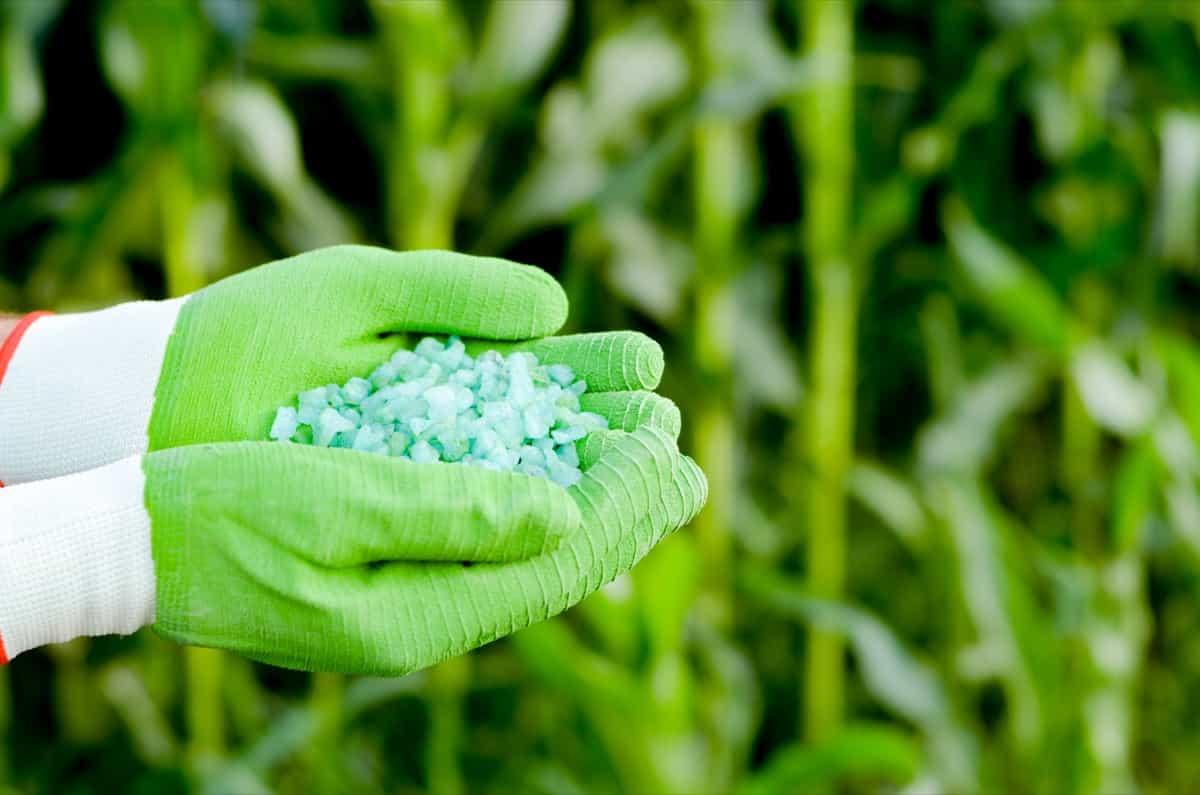
FAR = (RNR – ANS) / NUE
For example, suppose a farmer wants to grow wheat on one acre of land in India. The RNR for wheat is 120 kg N/ha, 60 kg P2O5/ha, and 40 kg K2O/ha. The ANS from soil testing is 20 kg N/ha, 10 kg P2O5/ha, and 15 kg K2O/ha. The NUE for wheat is 0.5 for N, 0.3 for P2O5, and 0.4 for K2O.
FAR for Wheat
- FAR (N) = (120 – 20) / 0.5 = 200 kg N/ha
- FAR (P2O5) = (60 – 10) / 0.3 = 167 kg P2O5/ha
- FAR (K2O) = (40 – 15) / 0.4 = 63 kg K2O/ha
Converting FAR from kg/ha to lb/acre
- FAR (N) = 200 x 0.89 = 178 lb N/acre
- FAR (P2O5) = 167 x 0.89 = 149 lb P2O5/acre
- FAR (K2O) = 63 x 0.89 = 56 lb K2O/acre
To convert FAR from nutrient to fertilizer, divide by the nutrient content of the fertilizer. For example, if the farmer uses urea (46% N), single super phosphate (SSP) (22% P2O5), and muriate of potash (MOP) (62% K2O) as fertilizers, the fertilizer application rate is:
- FAR (urea) = 178 / 0.46 = 387 lb urea/acre
- FAR (SSP) = 149 / 0.22 = 677 lb SSP/acre
- FAR (MOP) = 56 / 0.62 = 90 lb MOP/acre
Importance of Precision in Fertilizer Application
- It ensures that the crops receive the right amount of nutrients at the right time and place, which improves crop growth, yield, and quality.
- It reduces the cost of fertilizer inputs and increases the profitability of farming.
- It minimizes the environmental impact of fertilizer use, such as nutrient runoff, leaching, pollution, and greenhouse gas emissions.
Environmental Impact of Fertilizer Application
Fertilizer application has both positive and negative environmental impacts. Positive impacts include increased soil fertility, carbon sequestration, and soil erosion reduction. Negative impacts include nutrient imbalance, soil quality and crop nutrition, nutrient loss and water resource pollution, and emissions of greenhouse gases like nitrous oxide and methane.
In case you missed it: Easy Homemade Recipes for Garden Plants: Natural and Organic Fertilizer for Vegetables, Flowers, and Houseplants
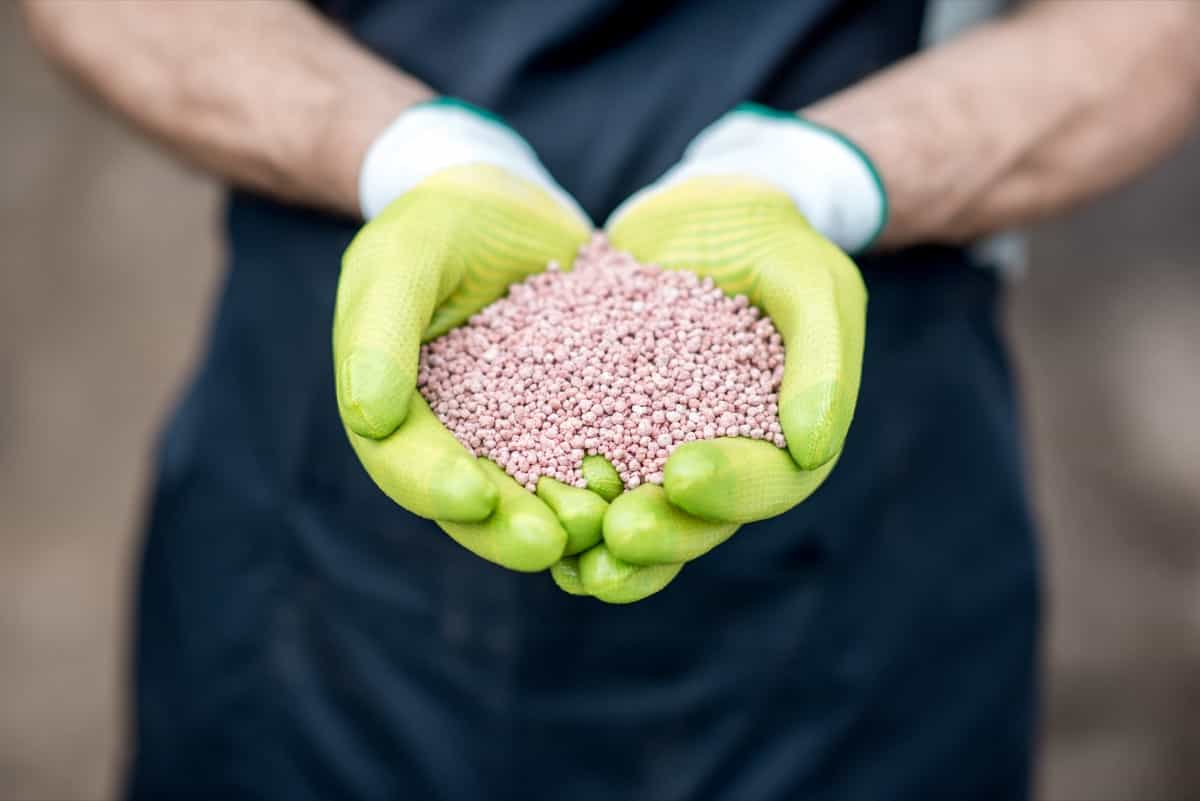
These effects support food security, mitigate climate change, and preserve soil health and biodiversity. However, they also contribute to nutrient loss and pollution, affecting aquatic ecosystems and human health.
Best Practices for Determining Fertilizer Application Rates
- Conduct soil testing before planting to assess the soil fertility and nutrient status.
- Use balanced fertilizers that match the crop nutrient requirements and soil nutrient supply.
- Apply fertilizers based on the crop growth stage, critical nutrient periods, and environmental conditions.
- Use appropriate fertilizer placement, timing, and methods to enhance nutrient use efficiency and reduce nutrient losses.
- Monitor crop growth and performance to adjust fertilizer application rates as needed.
- Keep records of fertilizer use and crop yield to evaluate fertilizer efficiency and profitability.
Adjusting Fertilizer Application Rates for Different Crops
Fertilizer application rates need to be adjusted for different crops depending on their nutrient requirements, uptake patterns, yield potential, and quality standards.
Cereals: Cereals such as wheat, rice, maize, sorghum, and millet need more nitrogen than other nutrients. Nitrogen should be applied in split doses at planting, tillering, and flowering stages. Phosphorus should be applied at planting or before transplanting. Potassium should be applied at planting or during vegetative growth. Micronutrients such as zinc, boron, iron, and manganese should be applied as foliar sprays or soil amendments if deficient.
Legumes: Legumes such as beans, peas, lentils, soybeans, groundnuts, and chickpeas need less nitrogen than cereals because they can fix atmospheric nitrogen through symbiotic bacteria. However, they need more phosphorus and potassium than cereals. Phosphorus should be applied at planting or before transplanting. Potassium should be applied at planting or during vegetative growth. Micronutrients such as zinc, boron, iron, and manganese should be applied as foliar sprays or soil amendments if deficient.
Innovations in Fertilizer Application Rate Technology
Fertilizer application rate technology involves methods and tools used to measure, calculate, apply, and monitor fertilizer doses for different crops. It has evolved from traditional methods like broadcasting or hand placement to modern methods like variable rate application and site-specific nutrient management.
In case you missed it: 9 Best Multi-Purpose Fertilizers in India: Guide to Buying Top Multi-Purpose Fertilizers
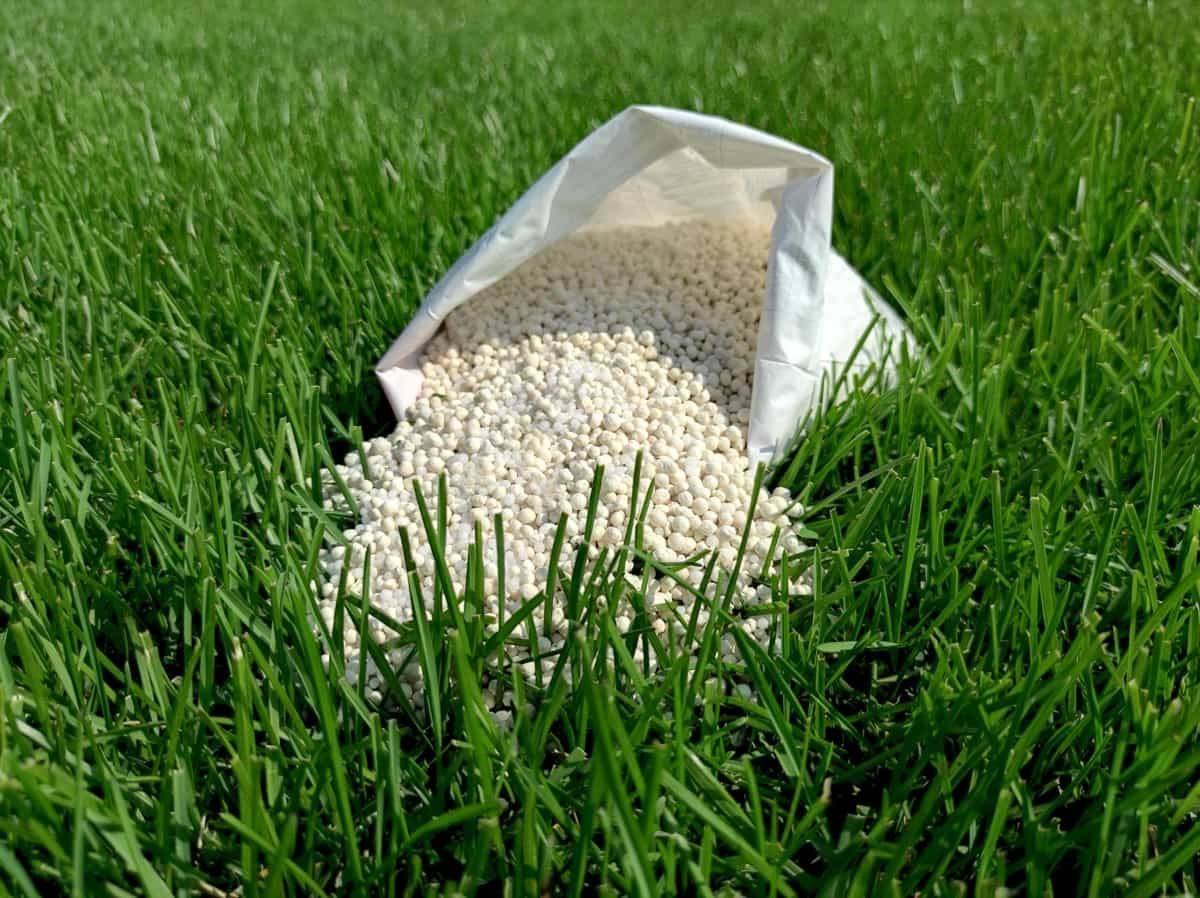
Innovations in fertilizer application rate technology include variable rate application (VRA), which allows for different fertilizer amounts based on soil properties, crop growth, or yield potential, improving nutrient use efficiency, reducing costs, and minimizing environmental impacts.
Site-specific nutrient management (SSNM) aims to apply the right amount of fertilizer at the right time and place for each crop based on soil testing, crop response, and yield goals. Sensors measure physical or chemical properties of soil, plant, or atmosphere related to nutrient status or demand, providing real-time information on nutrient availability and helping adjust fertilizer application rates. GPS/GIS uses satellites to determine Earth’s location with high accuracy, while drones and robots help monitor and control fertilizer applications.
Balancing Nutrient Needs with Fertilizer Application
Fertilizer application is for crop productivity and soil fertility, but without considering the nutrient needs of crops and soil, environmental problems can arise. Factors such as crop type, growth stage, yield potential, soil type, climate, and cropping system can influence nutrient requirements. Soil testing can assess nutrient status and determine fertilizer requirements for specific crops. The fertilizer application rate should be based on crop requirements and nutrient supply from soil and other sources.
Timing fertilizer application should match crop demand during different growth stages, such as before or at sowing, during early vegetative growth, and critical growth stages. The application method should ensure uniform distribution and placement of fertilizers, and the fertilizer source should provide adequate amounts of essential nutrients in a suitable form for crop uptake. Balancing these factors can optimize crop production and soil health while minimizing environmental risks.
Monitoring and Evaluating Fertilizer Applications
Monitoring and evaluating fertilizer applications is crucial for assessing their effectiveness in improving crop productivity and soil fertility. This involves collecting data on various parameters related to fertilizer use and crop performance during the cropping season. Evaluating involves analyzing the data to measure the impact of fertilizer use on crop yield, quality, profitability, nutrient use efficiency, and environmental sustainability.
Parameters monitored for fertilizer applications include fertilizer type, amount, source, timing, method, soil properties, crop growth, yield, quality, nutrient uptake, nutrient balance, economic returns, and environmental impacts. Methods for monitoring and evaluating fertilizer applications include soil testing, plant analysis, field trials, remote sensing, and modeling. Soil testing is a laboratory analysis of soil samples to determine their physical, chemical, and biological properties, while plant analysis assesses nutrient content and deficiency symptoms.
Field trials compare the effects of different fertilizer treatments on crop performance and soil properties, while remote sensing monitors spatial and temporal variability of crop growth, yield, and quality. Modeling simulates crop dynamics and predicts the effects of fertilizer applications on crop performance and soil properties under different scenarios.
Sustainable Approaches to Fertilizer Application
Fertilizer application is crucial for crop productivity and food security. Still, excessive or inappropriate use can lead to negative environmental impacts like nutrient losses, pollution, greenhouse gas emissions, and soil degradation. Sustainable approaches to fertilizer application are needed to balance the economic, social, and environmental dimensions of agricultural development.
In case you missed it: Polyhalite Fertilizers and their Role in Organic Farming
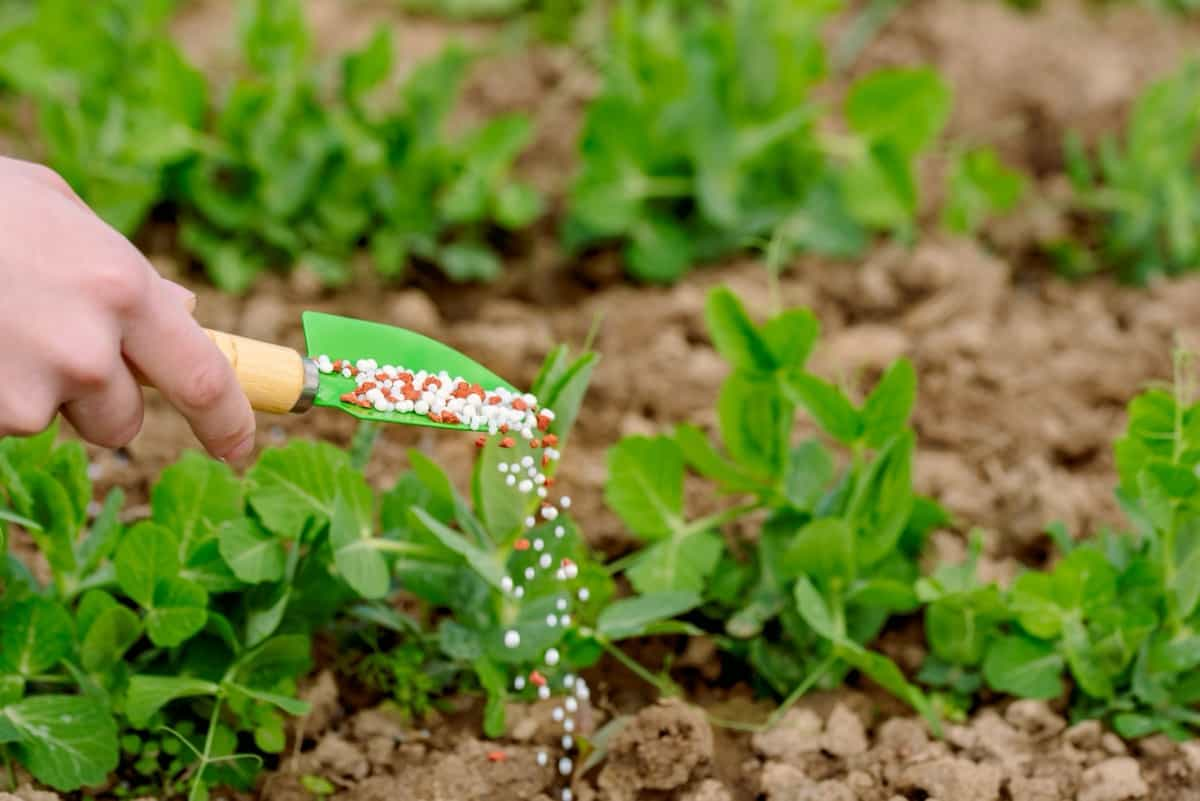
Some sustainable approaches include integrated nutrient management (INM), site-specific nutrient management (SSNM), precision agriculture (PA), and conservation agriculture (CA). INM combines chemical fertilizers with organic and biological sources to provide balanced nutrients to crops and soil, improving soil organic matter content, nutrient availability, cation exchange capacity, microbial activity, water holding capacity.
SSNM tailors fertilizer application rate, timing, method, and source to specific conditions, ensuring nutrient supply matches crop demand and accounts for spatial and temporal variability. Precision agriculture uses advanced technologies to monitor soil properties, crop growth, and environmental factors, optimizing input-output ratios.
Conservation agriculture involves principles like minimum soil disturbance, permanent soil cover, and crop diversification to enhance soil structure, water infiltration, erosion control, weed suppression, pest management, and carbon sequestration while reducing fertilizer requirements.
Regulatory Considerations for Fertilizer Application
India’s fertilizer application is regulated by laws and policies at national, state, and local levels to ensure quality, safety, availability, affordability, accessibility, and accountability. The Fertilizer Control Order (FCO) is a statutory order issued by the Government under the Essential Commodities Act 1955, regulating the manufacture, import, distribution, sale, use, and quality control of fertilizers. FCO specifies standards for various types of fertilizers, including straight, complex, micronutrient, organic, biofertilizers, and nanofertilizers.
Economic Analysis of Fertilizer Application
Fertilizer application is crucial for enhancing agricultural productivity and food security in India. The optimal use of fertilizers depends on factors like soil quality, crop type, climatic conditions, market prices, and government policies. An economic analysis of fertilizer application is essential to evaluate the costs and benefits of different types and doses for different crops and regions.
In case you missed it: Best Fertilizer for Bitter Gourd: Organic, Natural, Homemade, NPK Ratio, When and How to Apply

The marginal value product (MVP) of fertilizers is calculated and compared to the marginal cost (MC). If the MVP is greater than the MC, fertilizer application is profitable, while if it is less than or equal to the MC, it is not profitable. The MVP and MC of fertilizers can vary across crops and regions, depending on agronomic and economic factors.
Different Crop Fertilizer Application Rates Per Acre
| Crop | Fertilizer rate (kg/acre) | NPK ratio |
| Rice | 80-120-40 | 2:1:0.5 |
| Wheat | 120-60-40 | 2:1:0.33 |
| Maize | 120-60-60 | 2:1:1 |
| Cotton | 80-40-80 | 2:1:2 |
| Sugarcane | 200-100-100 | 2:1:1 |
| Banana | 400-200-600 | 2:1:3 |
| Mango | 500-250-750 | 2:1:3 |
| Cashew | 500-250-500 | 2:1:2 |
Conclusion
Fertilizer application rates per acre differ markedly among crops, reflecting their unique nutritional needs and growth patterns. This variance underscores the importance of tailored fertilization strategies to optimize crop yield and health, while also considering environmental sustainability and soil conservation practices.
- Types of Pesticides Used in Agriculture: A Beginner’s Guide
- Economical Aquaculture: A Guide to Low-Budget Fish Farming
- 15 Common Planting Errors That Can Doom Your Fruit Trees
- How to Make Houseplants Bushy: Effective Tips and Ideas
- Innovative Strategies for Boosting Coconut Pollination and Yield
- Pollination Strategies for Maximum Pumpkin Yield
- The Complete Guide to Chicken Fattening: Strategies for Maximum Growth
- Natural Solutions for Tulip Problems: 100% Effective Remedies for Leaf and Bulb-Related Issues
- Revolutionizing Citrus Preservation: Towards a Healthier, Greener Future
- Natural Solutions for Peony Leaf and Flower Problems: 100% Effective Remedies
- Maximizing Profits with Avocado Contract Farming in India: A Comprehensive Guide
- Natural Solutions for Hydrangea Problems: 100% Effective Remedies for Leaf and Flowers
- The Ultimate Guide to Choosing the Perfect Foliage Friend: Bringing Life Indoors
- From Sunlight to Sustainability: 15 Ways to Use Solar Technology in Agriculture
- The Ultimate Guide to Dong Tao Chicken: Exploring from History to Raising
- The Eco-Friendly Makeover: How to Convert Your Unused Swimming Pool into a Fish Pond
- Mastering the Art of Delaware Chicken Farming: Essentials for Healthy Backyard Flocks
- 20 Best Homemade Fertilizers for Money Plant: DIY Recipes and Application Methods
- How to Craft a Comprehensive Free-Range Chicken Farming Business Plan
- Brighten Your Flock: Raising Easter Egger Chickens for Beauty and Bounty
- How to Optimize Your Poultry Egg Farm Business Plan with These Strategies
- Subsidy for Spirulina Cultivation: How Indian Government Schemes Encouraging Spirulina Farmers
- Ultimate Guide to Raising Dominique Chickens: Breeding, Feeding, Egg-Production, and Care
- Mastering the Art of Raising Jersey Giant Chickens: Care, Feeding, and More
- Ultimate Guide to Raising Legbar Chickens: Breeding, Farming Practices, Diet, Egg-Production
- How to Raise Welsummer Chickens: A Comprehensive Guide for Beginners
- How to Protect Indoor Plants in Winter: A Comprehensive Guide
- Ultimate Guide to Grow Bag Gardening: Tips, Tricks, and Planting Ideas for Urban Gardeners
- Guide to Lotus Cultivation: How to Propagate, Plant, Grow, Care, Cost, and Profit
- Agriculture Drone Subsidy Scheme: Government Kisan Subsidy, License, and How to Apply Online
- Ultimate Guide to Raising Araucana Chickens: Breed Profile, Farming Economics, Diet, and Care
- Bringing Hydroponics to Classroom: Importance, Benefits of Learning for School Students
- Ultimate Guide to Raising Polish Chickens: Breed Profile, Farming Economics, Diet, and Care
- Ultimate Guide to Raising Australorp Chickens: Profile, Farming Economics, Egg Production, Diet, and Care
- Silkie Chicken Farming: Raising Practices, Varieties, Egg Production, Diet, and Care
- Sussex Chicken Farming: Raising Practices, Varieties, Egg Production, Diet and Care